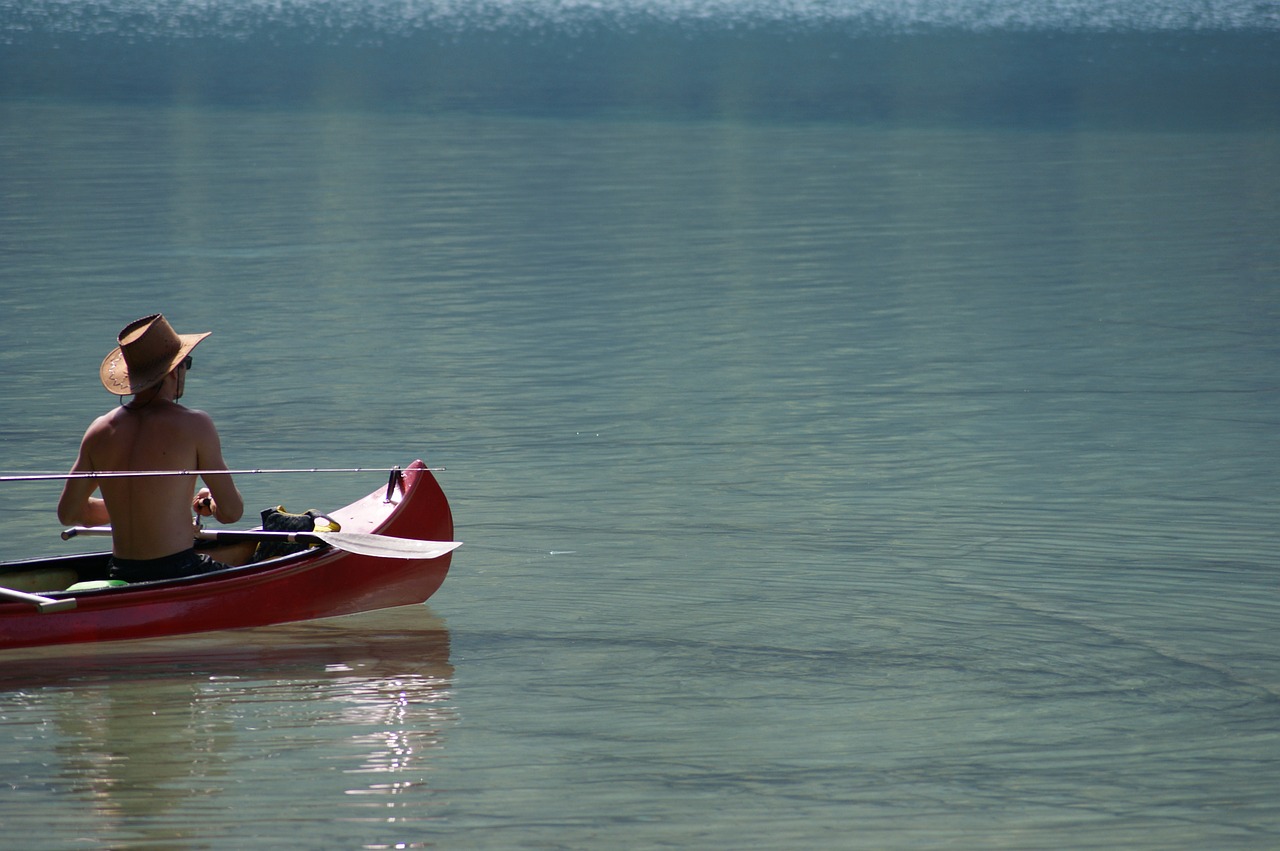Got A Canoe – Want To Fish: The Ultimate Combo – Advice For Beginners

Fishing from canoes is something humans have been doing since time immemorial. While our ancestors learned the skills while growing up from babies and often spent their lives doing, we modern humans need a few tips because we’ve generally got little idea. Well, other than knowing we can catch fish from canoes, after all, we’ve seen other people do it and how hard can it be?
You can fish from practically any canoe. Many canoes are designed to be paddled in tandem. (that is with two people) It is, therefore, generally harder to paddle one on your own. Paddling in a tandem canoe and trying to fish at the same time can be challenging and requires some skill.
The weather and water conditions also play a part. Solo canoes are better if you are fishing alone. If you have a tandem canoe, it is better to be paddling with two people. With possibly the exception of whitewater canoes, you can fish from most other canoes.
Before you head out towards the lake you will need to prepare all your gear; it’s always easier to prepare before setting out, plan ahead and you’ll avoid costly mistakes when you’re out on the water.

Tie your lures, get your reels loaded up with line etc. while you are on stable ground, rather than while rolling about on the water. That way you can begin to fish as soon as you get into the water.
Apart from your fishing rod, in your pack, you will need to include these items, lures, tackle, and a multi-tool with knife and pliers. Remember a hat and sunglasses. Pack the food and water that you will need for the day in a cooler. If you want to do some photography, you are best advised to have a waterproof camera or at least a waterproof bag or case to keep it in while not in use. Waterproof pouches and some rags may also be useful.
Canoes have the advantage of a bit more space (sometimes a lot more) than there is in a kayak, there should be plenty of room to store your gear and lay out what you need to use making everything more accessible. It does not matter if you store your gear in front of or behind you, just find where you’re most comfortable and go with it. In all likelihood, you’ll chop and change for a while until you settle in to what works for you.

OK, you’ve got to remember this point, you are going to be in a canoe and on water, canoes rock about and water gets things wet. The two combined means that there’s a good chance you’re going to get wet or some of your gear is going to get wet, so you’ve got to prepare for that by making sure that things like your phone and keys are kept safe and dry, preferably in something that will float if the worst happens.
If any water does get into your canoe it’s going to pool at the lowest point, so it’s wise not to store anything there unless it’s waterproof. Your rods should be easy to get to so in front of you is probably best for them so that as soon as you stop paddling you can get on with the reason for being out there.
When you’re ready to get on the water and there’s no wind or current, paddling will be easy, find a good spot, put down your paddle, pick up your rod and cast your line.
If the day is not perfect, things could be a bit more complicated and that’s where you need to have some canoe experience. The paddle needs to be easily at hand so you can control your direction and any drift, maybe even while you have a fishing rod in one hand, you then can rudder with the other. If you need to use an anchor do so, most canoeists would balk at the idea but the bottom line is that you’re out there to fish so be practical about it.

Something to be aware of is, if there are two people in the canoe it may be less stable, there is more gear packed in it, and you need to take care when casting to avoid casting past the other paddler’s face or crossing lines. The stern paddler is the one who can make slight course adjustments while drifting.
Wherever there’s a chance that you’re going to fall in, such as fishing from a canoe, you should wear some sort of life preserver, it doesn’t have to be massive, but they’re a proven help in case you get dunked, especially if the water is cold enough to put you into shock or you hurt yourself.
If you have any comments then please drop us a message on our Outdoor Revival Facebook page
If you have a good story to tell or blog let us know about it on our FB page, we’re also happy for article or review submissions, we’d love to hear from you.
We live in a beautiful world, get out there and enjoy it.
Outdoor Revival – Reconnecting us all with the Outdoor
